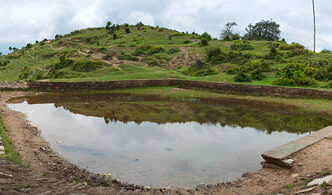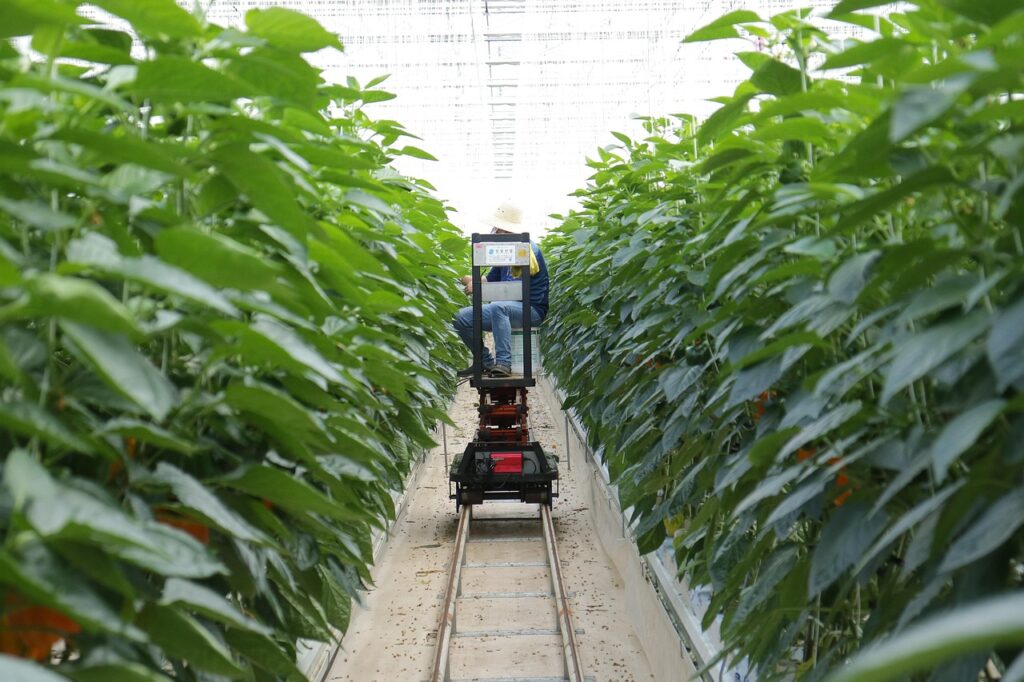
Abstract
Effective water and biomass management is essential for enhancing productivity in water-scarce regions. This blog advocates for a scientific approach that prioritizes biomass growth as a measure of water conservation efficiency. It examines the impact of evaporation losses and ineffective water harvesting structures, proposing strategically designed interventions to improve groundwater recharge and overall water availability. By highlighting the potential for biomass cultivation in rainfed and underutilized lands, the discussion underscores the importance of participatory research and policy reforms to drive sustainable solutions for vulnerable landscapes.
Where to begin?
The starting point is evaluation of resource – water and biomass – balance. Water is an essential resource for growing any biomass and overall biomass growth is a measure of how efficiently it is being used. Water and biomass balance will also help estimate the overall potential for biomass production if water resource is used efficiently. We desist from saying how efficiently water is used is subject to “divine” issue of rainfall variability. Much depends upon how well water is harnessed and used.
Water management is an issue in itself but not an end in itself. The indicator of water management efficiency is not in terms of how much water was stored in a reservoir or recharged as groundwater but how much biomass was grown. To assess biomass growth we need a standard measurement, it is kg or tonnes in dry terms and land use productivity of biomass kg or tons per ha. One hectare is 10,000 m2 and 1 ha is approximately equal to 2.5 acres or 4,000 m2. The combined water and land use productivity is defined as kg per ha-mm or biomass growth in kg from one ha of land on application or use of 1 mm of water. Therefore if 400 mm of water is applied, a widespread practice for wheat in India, and if 40 kg per ha-mm is the water and land use productivity then we get a biomass production estimate of 16 tons.
Is this estimate correct? If 25% is the harvest index for wheat then we will have a grain output of 4 tons; if 30% then approximately 5.2 tons. These are productivities very much found in India in better managed farms. As a matter of fact one of the thought leaders of Biomass Matters has recorded productivities over 6 tons for same water application in participatory crop demonstration trials in Haryana. Europe, namely GB, France and Germany achieve much higher productivities.
The objective here is not a scholarly article on wheat productivities but wheat being a crop widely found all over the world allows setting up of achievable benchmarks in land and water use productivity of biomass.
However, above productivity level requires decent crop care practice, something not much in vogue for non food-fodder-fuel biomass in India. In poorly managed watersheds, purely in natural rain-fed conditions without any special efforts of soil moisture conservation on pasture, lands productivities about 10 kg per ha-mm (of fodder) are accrued. In well managed watersheds where there are no specially adverse natural and man-made factors like rocky lands, salinity, etc. and where decent level of soil moisture conservation has been achieved, productivities of 20 kg per ha-mm (of fodder) are achieved.
The above 3 examples amount to biomass production levels as follows:
- In the case of wheat with 400 mm applied water the biomass production is about 16 tons dry biomass.
- In poorly managed watersheds in low rainfall area like 500 mm the rain-fed water utilisation is estimated about 150 mm and the biomass production at about 1,5 tons per ha.
- In well managed watersheds in low rainfall area water utilisation can be increased to minimum 200 mm and the corresponding biomass productivity is estimated at 4 tons per ha.
The examples of poorly and well managed watersheds implies that both land and water resources need to be allocated for non food-fodder-fuel biomass, which have existing uses, which theoretically displaces committed production. Therefore two questions arise- how are the existing requirements to be satisfied, and whether the water use for biomass production cuts in to committed, existing uses of available water.
An important issue that needs to be looked at is in which types of regions or areas would it be possible to take up biomass cultivation presently in India: certainly not areas where water is available abundantly, where farmers are too busy misusing, inefficiently using land and water resources, and the downstream industries (like sugar mills in sugarcane areas) are likely to be a major opposition to any change in land and water use pattern.

It would make sense to say there will be a better acceptability to this concept where water is not available in abundance and therefore lands remain unutilised or under utilised for a major part of the year. However, in such regions there is a strong likelihood of water shortage for, not just agriculture but also, for household drinking water and hygiene use. Therefore water availability intervention has to address both issues in a framework where biomass production leads to improved water availability and increased income.
It would seem counter intuitive that required water can be made available in low water availability areas. Here we would like to put forward a concept that does not get prominence in the discourse on water management – namely that significant proportion of rains is lost to evaporation due to parched condition of shallow strata which is required to be saturated for the generation of lateral flow (delayed run-off) and percolation in to groundwater aquifers (recharge). In the absence of any flow the water trapped in the shallow strata eventually evaporates.
Second important factor that causes evaporation is water conservation and harvesting structures constructed on sites that are not conducive to groundwater recharge. Water accumulated on such structures gets evaporated unless specific artificial recharge structures like recharge shafts are provided. However, groundwater recharge has only received a lip service in the over 60 year old water conservation activity as such and nearly 30 years of official conservation program.
The central thesis being put forward here is that scientifically designed water and soil conservation schema is necessary for saving rain waters that are lost to evaporation. The overall current understanding of the impact of rainwater harvesting on water management is “redistribution”, i.e. water that flows down as run-off and/or groundwater flow gets impounded upstream and therefore will adversely impact downstream water availability. Whereas our theorisation is that the impounded water augments overall water availability and it is more likely that the down stream water availability will also increase.
Next question is the applicability of this scenario: In which hydrogeological settings is this scenario feasible? This scenario is possible mainly in areas that are not irrigated round the year, where agriculture is mainly rainfed or 8 monthly with limited water availability post monsoon (for water efficient winter crop). This scenario is feasible mainly in hard rock areas that are not served through exogenous water sources like canals and drainage flows and where groundwater availability is limited to 2-3 post monsoon irrigations.
In low rainfall alluvial areas, the Ganga-Jamuna-Punjab regions and perennially irrigated hard rock areas where the shallow strata remains hydrated almost through the year and therefore evaporation losses from soil theorised for parched areas may not hold true.
Therefore, we are looking at a scenario where areas that are considered vulnerable may become, to begin with, biomass base with a livelihood basket as follows:
Monsoon crops: paddy in drainage lines, groundnut, pulses, oil seeds, finger millet, vegetables, turmeric, ginger, potato, onion, fodder and fuel, chili etc.
Extended monsoon crops: cotton, arhar (pigeon pea or red gram), bajra or pearl millet, vegetables, turmeric, ginger, chili, fodder and fuel, etc.
Winter crops: Jowar or sorghum, wheat, chana or gram, mustard, limited vegetables, green fodder, etc.
Perennial biomass on lands not cultivated under above cropping pattern, lands that are commonly termed as wastelands.
Local household and hygiene water availability
We are sure readers will raise two questions:
Isn’t evapotranspiration taking place on the basis of available soil moisture in the soils and terrains called wastelands, and then why do we call it a water loss?
How much land area could be available for biomass cultivation?
Response to first question:
Wastelands support an estimated about 2 tons per ha and productive water consumption in the form of evapotranspiration will be proportional to that. The factors that contribute to low productivity are – a) low nutrient content in the soils that are being exploited for fodder for a number of decades without nutrient replenishment; and b) in the absence of scientific soil moisture conservation soils get dehydrated. Therefore available soil moisture does not result in to biomass productivity.
Response to second question:
This issue needs to be assessed carefully through scientific and participatory investigations. An in-depth study conducted by this author in a 3500 sq km river basin, Ghod, in Pune district (Maharashtra State, India) reveals the following – areas that are not serviced by exogenous water supply are about 50% of the total, i.e. 1750 sq km. Of this about 1/3rd or about 600 sq km is irrigated agriculture supported by local surface and groundwater. Another 1/3rd may be other uses like forests, habitats and infrastructure and remaining 1/3rd is agriculture and fodder-fuel plantations with poor productivities. The same output can be achieved in 1/2 of that , i.e. approx. 300 sq km and biomass production can be taken up in the remaining 300 sq km. Therefore biomass production potential in this basin can be estimated to be about 30000 ha X 8 tons, 240,000 tons.
In conclusion, rethinking water conservation through a scientific soil and water management approach can transform vulnerable areas into productive landscapes. By reducing evaporation losses and optimizing rainwater use, we can enhance both water availability and livelihoods.
These insights call for further research and collaborative action to unlock sustainable solutions for water-scarce regions.

